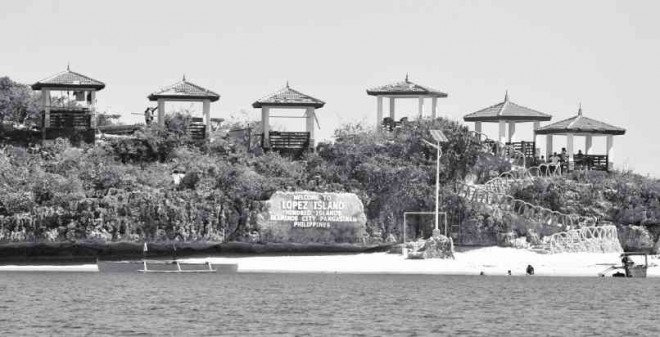New attractions await Hundred Islands visitors
THE 30-MINUTE boat ride from the coastal village of Lucap to the Hundred Islands National Park (HINP) in Alaminos City used to be only a two-way trip to either Quezon, Governor’s or Children’s islands.
Boatmen would take tourists to one of the three islands as soon as they arrived at the wharf and return them to the mainland before sunset.
Until recently, only these islands had picnic sheds, toilets and facilities for an overnight stay that even if these were already teeming with people, tourists would still go there and try to occupy whatever space they could squeeze themselves into.
Today, the HINP can accommodate more people after six islands were opened as additional destinations. These are the Lopez, Marcos, Clave, Romulo, Mayor’s and Virgin islands.
More space
Article continues after this advertisementAlaminos City Mayor Arthur Celeste said he saw the need to create more space for tourists and improve the facilities in the HINP when he assumed office in 2013.
Article continues after this advertisement“I immediately looked into the situation of the islands. Aside from their low carrying capacity, I found out that they had substandard facilities,” he said.
These facilities were built on the Quezon, Children’s and Governor’s islands in the 1990s when the defunct Philippine Tourism Authority of the Department of Tourism administered the park.
On Sept. 29, 2005, the administration, control and management of the HINP were transferred to the city government through an executive order.
But there has not been much improvement since then, Celeste said.
“Why do we have to concentrate on Quezon, Children’s and Governor’s islands when there are many more islands that can be developed?” he asked.
Park beautification
In July 2013, the city government dismantled all structures on the three islands and began his beautification program for the park.
Today, the city built eight guest houses, 60 gazebos and two pavilions on the nine islands, making them more attractive to tourists. These also have solar-powered posts, garden and beach lights, portable toilets and concrete trails, stairs and rails.
By the end of the year, Celeste said the city would complete the development of all islands with beaches and open them to tourists.
Of the 123 small islands scattered in the park’s 1,676-hectare area, only 16 have beaches. The rest have coralline shores not fit for swimming.
On Quezon and Children’s islands, guesthouses are available for P5,000 a night. A guest house has a bedroom, a matrimonial bed, bathroom, mattresses, terraces, and dining and kitchen areas.
“You can actually own an island for a night or two,” Celeste said.
Gazebos are rented out for P600 a day, cheaper than the P1,500 a day rental for the bamboo sheds the city had dismantled.
Tap water
Soon, all 16 islands will have tap water after the installation last year of a 6.2-kilometer underwater pipe from the mainland to the Governor’s, Children’s and Quezon islands.
Miguel Sison, city tourism officer, said more activities have also been introduced on the islands. At the Quezon Island, for instance, tourists can try its 140-meter zip line, wall climbing and rappelling. There is also helmet diving, banana boat ride, kayaking and snorkeling.
On the Governor’s Island, tourists can climb to its highest peak and enjoy the view of the other islands from its deck. There is also a statue of St. Joseph the Carpenter, the city’s patron saint.
“We also have bird-watching activities. Another attraction is the Monkey Island, where tourists can watch monkeys in their habitat. We have the Bat Island, where fruit bats can be seen hanging from tree branches,” Sison said.
Pilgrimage Island
By March next year, the development of a Pilgrimage Island will be completed. “With thousands of visitors coming daily during Holy Week, we thought of developing this island as our way of bringing people closer to God and as a way of thanking Him for giving us this place,” Celeste said.
The Pilgrimage Island will have a 16.8-m statue of Christ facing the mainland, a chapel and Stations of the Cross.
Celeste said the city government had spent P120 million for the beautification projects and the Lucap Wharf, where the city tourism office and souvenir and food shops are being built.
Waste management
Celeste said he is concerned most now on the solid waste management on the islands.
“This is a challenge. But we are seeing to it that every day, we are able to haul wastes to the mainland, where these are disposed of properly,” Celeste said.
On islands with rest rooms, septic tanks were built using a technology that would treat waste water before releasing it to the sea.
